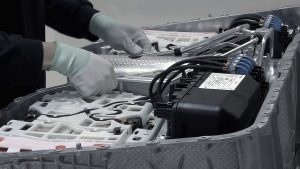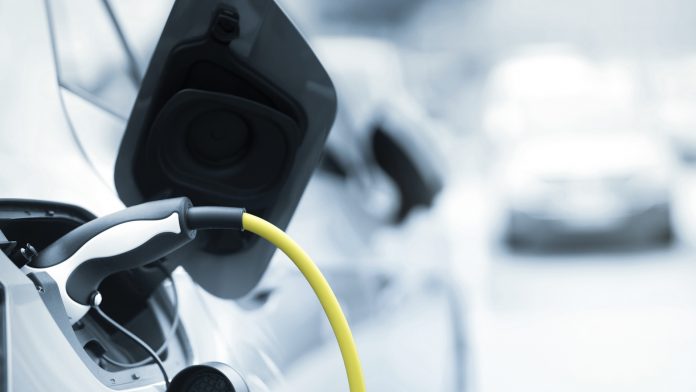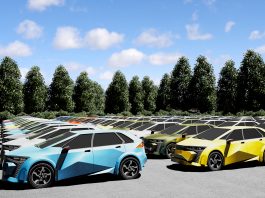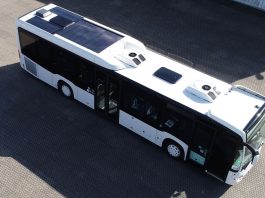As global targets of zero-emission transport near closer in our headlights, let’s explore how electric vehicle conversion can help us successfully navigate the transition to E-mobility worldwide.
Despite seemingly being a new phenomenon, the electric vehicle (EV) is not a recent innovation. EV technology is more than a century old and predates traditional internal combustion engine (ICE) powered vehicles that dominate our roads today. The origins of the EV can be traced back as far as the early 1800s to a British Inventor called Robert Anderson, who developed the world’s first crude electric carriage in 1832.1 Despite this being a groundbreaking advancement on its horse and carriage counterpart at the time, the development of ICE-powered transportation later that century rendered the EV obsolete until recent decades. Limitations of the technology, predominantly affordability, meant that when Henry Ford’s mass-produced Model T hit the market in 1908 at just a fraction of the price of EVs, the global landscape of mobility would be changed forever, entering an emission-producing era that has led to the climate crisis we see today.
The urgent need to reduce our planet’s CO2 emissions has resulted in countries around the world introducing radical legislative changes to expedite decarbonisation. Estimates suggest that the transport sector has the highest reliance on fossil fuels globally, accounting for 37% of CO2 emissions from end-use in 2021.2 To combat the significant emissions produced by the sector, ambitious targets have been set to reduce dependency on fossil-fuel-powered mobility and transition to electrified transport. However, over a century later, the issues that inhibited EVs still persist, with charging infrastructure, vehicle range, availability, and affordability hampering EV adoption.
Availability and affordability are two of the primary barriers to EVs, as producing the sheer volume of EVs required to replace conventional cars may not be feasible in the short time frame we have to mitigate global emissions, and the steep price of EVs currently on the market make the transition unaffordable for many. Replacing every vehicle on the road with a new electric alternative is not only an unassailable target but would also cause significant emissions in the mass-production process. To combat this, innovative companies are pioneering technology to convert traditional vehicles, from large SUVs to classic cars, into EVs at just a fraction of the price, removing the barrier to electrified mobility.
With that in mind, let’s take a look at how EV conversion can help drive the E-mobility revolution.
Global vehicle emission targets
Countries worldwide have set elaborate goals to reduce emissions in the transport sector. The EU’s Fit for 55 legislation outlines changes that look took to shift the transport paradigm, aiming to cut CO2 emissions for new cars by 55% and new vans by 50% by 2030 compared to 2021 levels, which will increase to a 100% emission reduction for both new cars and vans by 2035. The overarching aim of the package is to enable the EU to reduce its net greenhouse gas emissions by at least 55% compared to 1990 levels, achieving carbon neutrality by 2050.3

Jozef Síkela, the Czech minister of industry and trade, commented: “This agreement will pave the way for the modern and competitive automotive industry in the EU. The world is changing, and we must remain at the forefront of innovation. I believe we can take advantage of this technological transition. The envisaged timeline also makes the goals achievable for car manufacturers.
This sentiment was echoed by Anna Hubáčková, the Czech minister of environment, who said: “Closing the first deal on a proposal from the ‘Fit for 55’ package is a strong signal that the EU is determined to make progress towards climate neutrality and the green transition.”
Across the pond, the US is also setting sizable EV goals. The US Government has outlined the target of reaching 50% penetration of plug-in EVs by 2030 to combat the country’s dependency on fossil fuels. President Joe Biden has also pledged to achieve economy-wide net zero carbon emissions by 2050, which is now a formal US submission under the 2015 Paris Accords of the United Nations Framework Convention on Climate Change.
Although, in theory, these initiatives will help to power the EV transition, in reality, is it possible to accomplish such a seismic shift in transportation?
Can we meet the global demand?
There are around 1.5 billion vehicles worldwide. Most of the world’s cars are located in Asia, with Europe accounting for 28% and North America making up 24% of vehicles.4 The current breakdown of cars globally are as follows:
- Asia: 531 million vehicles;
- Europe: 405.3 million vehicles;
- North America: 351 million vehicles;
- South America: 83 million vehicles;
- Middle East: 49 million vehicles;
- Africa: 26 million vehicles; and
- Antarctica: about 50 vehicles.
With such a colossal number of vehicles to replace, can industry meet demand in time? In the EU alone, electric vehicle registrations in 2021 were nearly 1,729,000, a significant rise from 1,061,000 in 2020. This represents an increase from 10.7% to 17.8% in the share of total new car registrations. Electric van uptake also increased from 2.1% of total new registrations in 2020 to 3.1% in 2021.5 Despite EV adoption growing exponentially in recent years, there are still barriers preventing motorists from acquiring the technology.
Barriers to electric vehicle adoption
The two predominant factors impeding EV uptake are availability and affordability. In North America, there are currently only 29 fully electric consumer vehicle models on the market, compared to more than 400 combustion engine alternatives, leaving consumers with very few options. This is further highlighted in the costs, which price out many prospective EV buyers. Estimates suggest the average price of purchasing an electric vehicle in the US was around $75,000 in 2021, whereas the average price for a vehicle was $42,000.6 This significant price disparity is causing many motorists to opt for the emission-producing option.

In addition, manufacturing such a substantial number of EVs in such a short timeframe incurs environmental problems. EV production will cause additional carbon emissions and strain finite resources if not done sustainably, replacing tailpipe emissions with industry ones, akin to robbing Peter to pay Paul. Moreover, what will happen to the elements of old vehicles that cannot be recycled, which would only add to the global pollution problem? EV conversion provides a cost-effective and sustainable solution to our electrified transportation needs.
How EV conversion can drive the transport transition
EV conversion provides an alternative route for motorists to go electric, turning existing ICE-powered vehicles into zero-emission transport at a fraction of the price. The beauty of EV conversion is that almost any existing vehicle can be electrified. For many motorists, an offputting aspect of the EV transition is the feeling of losing some of the most iconic cars designed throughout history. EV conversion enables people to stay behind the wheel of that history and drive it into the green era, allowing motorists to enjoy their vehicle of choice in an environmentally-friendly fashion. Furthermore, by upcycling older vehicles, fewer previous resources are used compared to buying a new EV.
There is a range of EV conversion options available to consumers, ranging from DIY kits, although having specialist mechanical and high-voltage electrical expertise is essential, to specialist EV conversion companies who can expertly retrofit your vehicle. Customers can also buy ready-made converted EVs, although this is usually a more expensive option. In addition to preserving motoring heritage and having a wide range of possibilities, EV conversion provides a more inexpensive route to electrification. In the UK, DIY conversion kits start from around £5,000, with EV conversion specialists charging between £15,000 to £30,000, significantly cheaper than buying a new EV.7
The EV revolution has presented many challenges, from supply chain issues to technological limitations. However, as the transportation industry looks to reinvent the wheel, perhaps EV conversion can provide engineering from the past to provide solutions for the future.
References
- https://www.energy.gov/articles/history-electric-car#:~:text=First%20Crude%20Electric%20Vehicle%20Is,an%20English%20inventor%20in%201884.
- https://www.iea.org/topics/transport
- https://www.consilium.europa.eu/en/press/press-releases/2022/10/27/first-fit-for-55-proposal-agreed-the-eu-strengthens-targets-for-co2-emissions-for-new-cars-and-vans/
- https://hedgescompany.com/blog/2021/06/how-many-cars-are-there-in-the-world/
- https://www.eea.europa.eu/ims/new-registrations-of-electric-vehicles#footnote-3URSKG9P
- https://www.exro.com/industry-insights/barriers-to-electric-vehicle-adoption-in-2022
- https://www.rac.co.uk/drive/electric-cars/choosing/electric-car-conversion-how-to-convert-a-car-to-electric/









